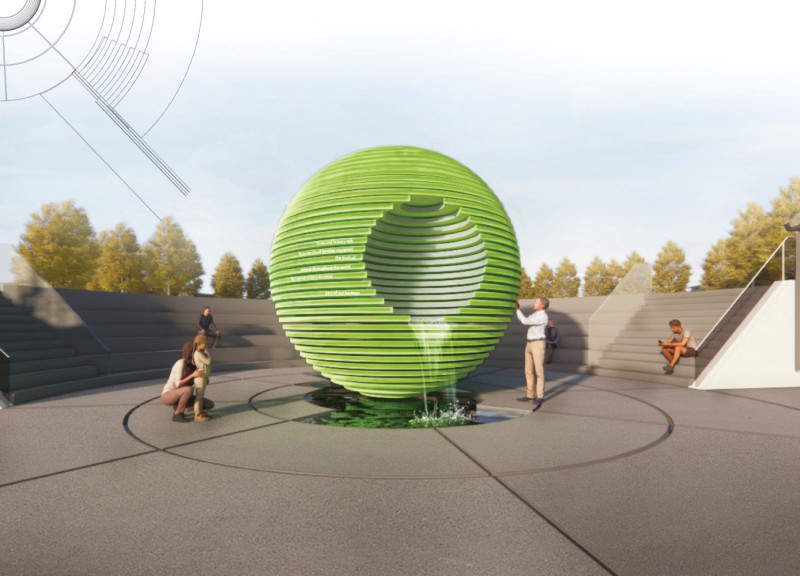5 key facts about this project
The Last Genocide memorial stands on Queen's Street, addressing complex themes of loss, recovery, and remembrance. The concept revolves around envisioning a future where society has witnessed the Last Genocide. It aims to create a structure that positively contributes to both cultural and environmental spaces. The design invites visitors to engage with the history being commemorated through interactive and thoughtful elements.
Engagement and Interactivity
The memorial is designed for visibility, drawing the attention of both pedestrians and vehicles. It includes interactive features that invite visitors to actively explore. The layered structure encourages individuals to engage with the stories of genocide, promoting deeper connections to the experiences being honored. This approach enhances the educational aspect of the memorial.
Sustainable Power Features
At its core, the memorial features layers that rotate around a central column. This rotation produces energy, powering lights and audio components. The functional design ensures that the memorial can sustain itself while enhancing visitor interaction. The surrounding pavement includes energy-generating tiles that capture energy from footsteps, contributing to the overall energy needs as more people visit.
Water and Healing Elements
Water features are an essential part of the design, incorporating an algae bridge that spans a shallow pool. This interactive water element adds visual appeal and helps drown out nearby traffic noises, fostering a tranquil space for reflection. Bubblers and a weir create dynamic interactions, allowing visitors to engage with water in a way that symbolizes peace and renewal.
Educational and Cultural Significance
The structure of the sphere contains layers filled with bioluminescent microalgae, enhancing its visual experience while providing educational content. Text about various genocides is placed within translucent acrylic layers, with QR codes included for further exploration. This design supports remembrance while encouraging ongoing discussions about historical atrocities, establishing a valued space within the urban environment.
Within the garden, the Ginkgo Biloba tree is positioned as a symbol of resilience and growth. Its colorful autumn leaves amplify the memorial’s message, inviting visitors to reflect on both nature and the stories echoed within the structure.






















































